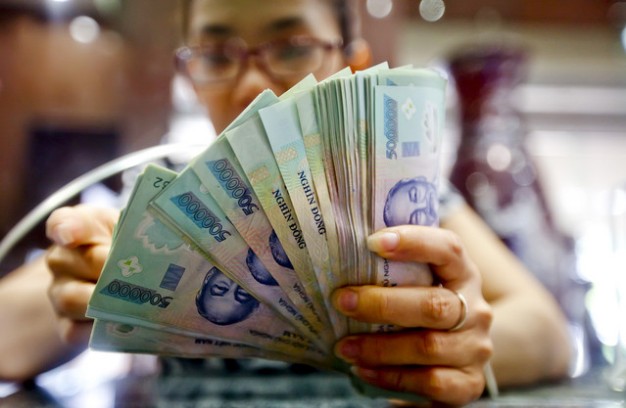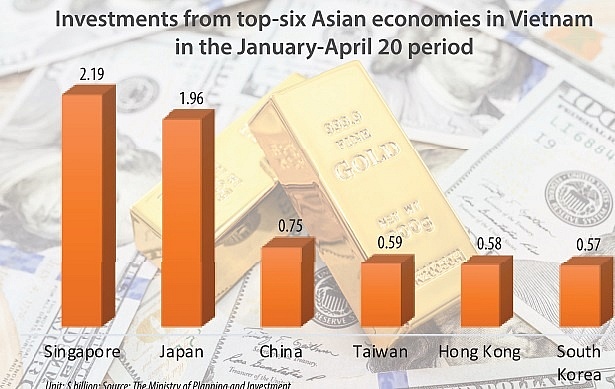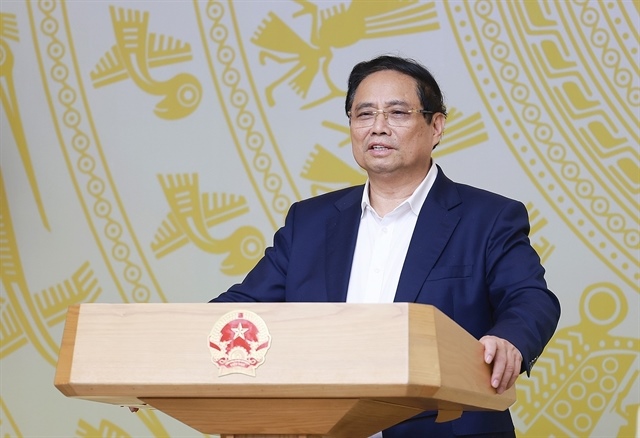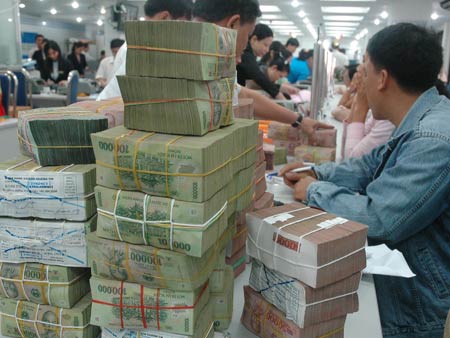Fitch Revises Vietnam's Outlook to Positive; Affirms at 'B+'
Fitch Revises Vietnam's Outlook to Positive; Affirms at 'B+'
Fitch Ratings has affirmed Vietnam’s Long-Term Foreign- and Local-Currency Issuer Default Rating at ‘B+’. The issue ratings on Vietnam’s senior unsecured foreign- and local-currency bonds are also affirmed at ‘B+’. The Outlooks on the Long-Term IDRs are revised to Positive from Stable. The Country Ceiling is affirmed at ‘B+’ and the Short-Term Foreign Currency IDR at ‘B’.

Key rating drivers
The revision of the Outlook on Vietnam’s IDRs to Positive from Stable reflects the following key rating drivers:
- There has been an improvement in macroeconomic stability. The economy has begun to recover following a difficult period after austerity measures were implemented in early 2011 under Resolution 11 to cool an overheated economy. Real GDP grew 5.4% in 2013 (5.2% in 2012) as both domestic and external demand picked up. Fitch forecasts real GDP to grow 5.7% and 5.9% in 2014 and 2015 respectively. Meanwhile, consumer price inflation has moderated, coming in at 6.6% in 2013 compared with 9.1% in 2012 and 18.7% in 2011.
- The country’s external finances have strengthened. Fitch estimates that Vietnam recorded another large current account surplus of 5% of GDP in 2013 (5.8% in 2012). Strong foreign direct investment (FDI) inflows, at 6.8% of GDP in 2013, continue to underpin the expansion in the manufacturing/export sector. However, Fitch estimates that foreign-exchange reserves stood at USD28.6bn at end-December 2013 (USD26.1bn at end-2012), equivalent to 2.4 months of current external payments, which is not a large buffer given Vietnam has experienced episodes of significant capital flight in recent years.
- The banking sector remains a source of weakness for Vietnam’s credit profile due largely to a high but unknown level of non-performing loans (NPLs). The implementation of Circular 2, which will apply stricter rules in classifying and provisioning for NPLs was delayed until June 2014. However, the authorities have begun to address the issue by creating a national asset management company to help resolve NPLs. Meanwhile, funding pressures in the banking sector have eased due to divergent trends in loans and deposits, which resulted in the system-wide loan-to-deposit ratio falling to 91.6% at end-2Q13, down from 94.8% at end-2012.
- Fiscal policy has turned more expansionary over the past year. Fitch estimates that Vietnam’s budget (including off-budget spending) posted a deficit of 5.8% of GDP in 2013 (4.8% in 2012). Fitch in turn estimates that gross government debt rose to 42.6% of GDP at end-2013 (40.0% at end-2012). In comparison, the ‘B’ and ‘BB’ peer rating group medians stood at 42.4% and 35.1% in 2013 respectively.
Rating sensitivities
The Positive Outlook reflects the following risk factors that may, individually or collectively, result in an upgrade:
- Meaningful progress in reforming the banking sector, including the successful implementation of Circular 2 and the transfer of NPLs to the Vietnam Asset Management Company, contributing to greater clarity on the potential cost of resolving NPLs
- Continued macroeconomic stability, characterized by an environment of low and stable inflation and external equilibrium
- Acceleration in structural reforms, particularly at state-owned enterprises, which would not only help improve the economy’s competitiveness but also banks’ asset quality
The Outlook is Positive. Consequently, Fitch's sensitivity analysis does not currently anticipate developments with a material likelihood, individually or collectively, of leading to a downgrade. However, future developments that may, individually or collectively, lead to a revision of the Outlook to Stable include:
- Higher-than-expected losses in the banking sector, which would require large-scale sovereign support and potentially threaten macro-financial stability
- Abandoning Resolution 11’s macroeconomic stability objectives and/or an adoption of policies that threaten price and external stability
- A sharp, sustained deterioration in the public finances which leads to a large increase in Vietnam’s gross government debt/GDP ratio
Key assumptions
- Fitch assumes that Vietnam’s authorities will continue to adhere to policies aimed at achieving macroeconomic stability, sustainable GDP growth, low and stable inflation, and healthier current account balances.
- Fitch assumes that the potential cost of restructuring the banking sector will be broadly in line with the agency’s base of 10% of GDP.
- Fitch assumes that political stability will persist in the medium-term.
- Fitch assumes that the global economy will improve gradually over the forecast period. The world’s real GDP growth is projected to rise 2.9% and 3.2% in 2014 and 2015, compared with an estimate of 2.3% in 2013.
Fitch






















